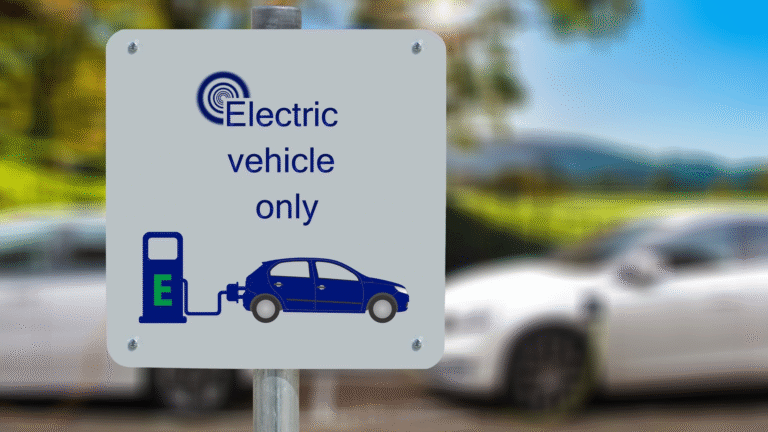As electric vehicle (EV) adoption accelerates across Australia, many shopping centres have installed charging stations in their car parks. These EV chargers are often pitched as a modern convenience — a way to “top up while you shop.” But are they genuinely useful, or are they mostly marketing fluff aimed at projecting a green image?
Let’s explore whether EV charging at shopping centres delivers real value to Aussie drivers — or if it’s just another flashy amenity.
—
Table of Contents
- The Rise of Retail Charging
- What Types of Chargers Are Being Installed?
- Who’s Installing and Operating Them?
- Benefits for Shoppers and Retailers
- Common Frustrations and Limitations
- Is Charging While Shopping Actually Practical?
- Are These Chargers Helping Australia’s EV Rollout?
- The Greenwashing Question
- What the Future of Retail Charging Might Look Like
- Conclusion
—
1. The Rise of Retail Charging
Across Australia, major shopping centre operators like Westfield (Scentre Group), Stockland, and Vicinity Centres are rolling out EV chargers in their car parks. Some are part of larger networks like Chargefox, Evie, or Tesla Destination Charging, while others are independently operated.
This trend mirrors similar moves in the U.S. and Europe, where retail destinations are increasingly tied to convenience-based EV infrastructure.
But are these shopping centre chargers really solving range anxiety, or just checking a sustainability box?
—
2. What Types of Chargers Are Being Installed?
Most shopping centres install either:
- AC destination chargers (7–22 kW): Good for a few hours of charging, typically adding 20–80 km of range over a shopping trip.
- DC fast chargers (50–150 kW): Less common, but found at select larger retail hubs, capable of significantly topping up in under an hour.
AC chargers are cheaper to install but often not suitable for quick top-ups. If your car is parked for less than an hour, you might barely add 10–20 km of range.
—
3. Who’s Installing and Operating Them?
EV chargers at shopping centres are often delivered through public-private partnerships or leased space arrangements with charging networks. For example:
- Chargefox and Evie have partnered with various mall operators
- Tesla has Destination Chargers at select centres
- Jolt and Ampol AmpCharge are entering retail partnerships
In many cases, the installation is as much about branding as utility.
—
4. Benefits for Shoppers and Retailers
From a shopper’s point of view:
- You’re already parking there, so why not get some free (or low-cost) charge?
- It’s a convenient way to “top up” without changing your routine
- For apartment dwellers without home charging, these spots offer a useful supplement
For retailers and mall operators:
- EV chargers attract higher-income, tech-savvy customers
- They help extend dwell time, leading to potentially higher spend
- Chargers support corporate ESG goals and green certifications
It’s a win-win — when done right.
—
5. Common Frustrations and Limitations
Despite the benefits, many EV drivers find retail charging inconsistent or frustrating:
- Chargers are often ICEd (blocked by petrol cars), especially in smaller centres
- Limited availability: Just 2–4 ports in a centre with thousands of cars
- Slow speeds: 7 kW charging may be inadequate for meaningful top-ups
- Broken or offline stations with poor maintenance
- Apps, sign-ups, and payment systems vary across providers
These issues can make retail EV charging more trouble than it’s worth — especially if you’re only in the centre for 20 minutes.
—
6. Is Charging While Shopping Actually Practical?
That depends on your vehicle, the charger speed, and how long you stay.
- A 7 kW AC charger delivers about 35–40 km of range in 2 hours — decent for urban drivers
- A 150 kW DC fast charger can provide 150+ km in just 30 minutes — excellent for road trippers or rideshare drivers
But if your trip is brief, or the charger is occupied or broken, it might offer negligible benefit. In other words: don’t rely on shopping centre charging for your primary charging needs — treat it as a bonus.
—
7. Are These Chargers Helping Australia’s EV Rollout?
Yes, but modestly. Shopping centre chargers play a role in building public charging awareness and confidence. They’re especially helpful in:
- Urban areas with limited home charging
- Normalising EV infrastructure in everyday places
- Bridging the gap before major public charging expansion completes
However, they are not a replacement for robust, high-speed public charging along highways or in dense urban corridors.
—
8. The Greenwashing Question
Some critics argue shopping centre EV chargers are more about PR than practical value — especially when:
- They are hidden, poorly maintained, or rarely functional
- The centre touts “100% EV-ready” but has just two slow chargers
- Usage data isn’t transparently shared or optimised
While not always greenwashing, some installations do feel more performative than purposeful.
—
9. What the Future of Retail Charging Might Look Like
As EV uptake grows, expect:
- More DC fast chargers at high-traffic retail sites
- Integration with loyalty programs and parking systems
- Smart charging: pause, resume, and schedule from your phone
- Better signage and protections from ICEing
- Bundled charging with shopping discounts or cinema tickets
Retailers that make charging seamless and reliable will win EV driver loyalty.
—
10. Conclusion
EV charging at shopping centres isn’t a gimmick — but it’s also not a full solution. When done well, it adds real convenience for drivers and real value for retailers. When poorly implemented, it risks being tokenistic and underused.
For now, treat retail EV chargers as opportunistic perks rather than essential infrastructure — and keep pushing for better speed, reliability, and access.
—
Are EV chargers at shopping centres useful or just marketing fluff? Explore whether retail charging adds real convenience — or if it’s all just for show.
